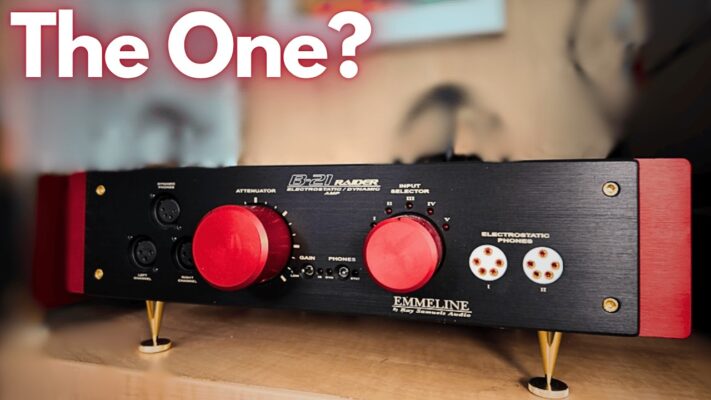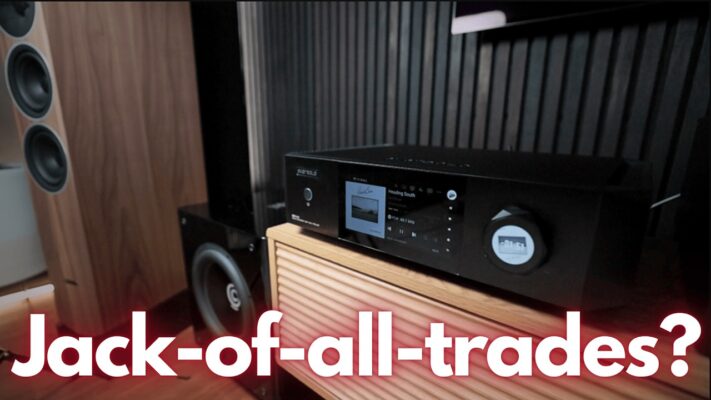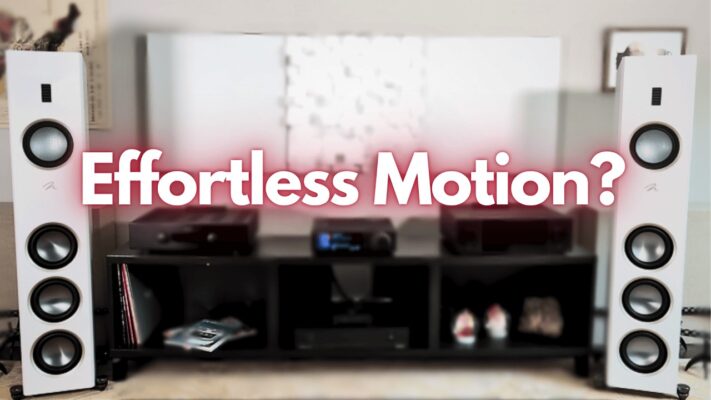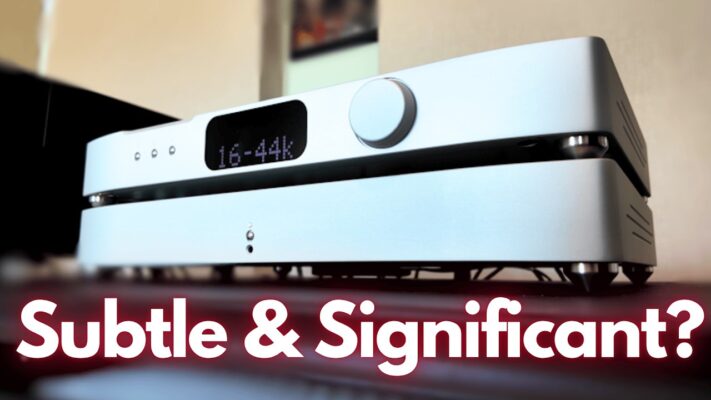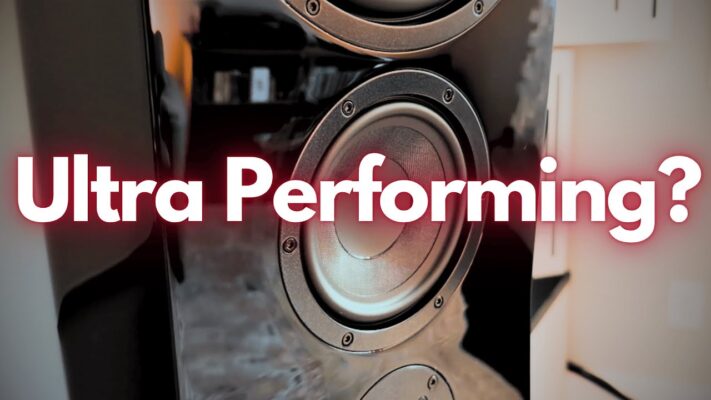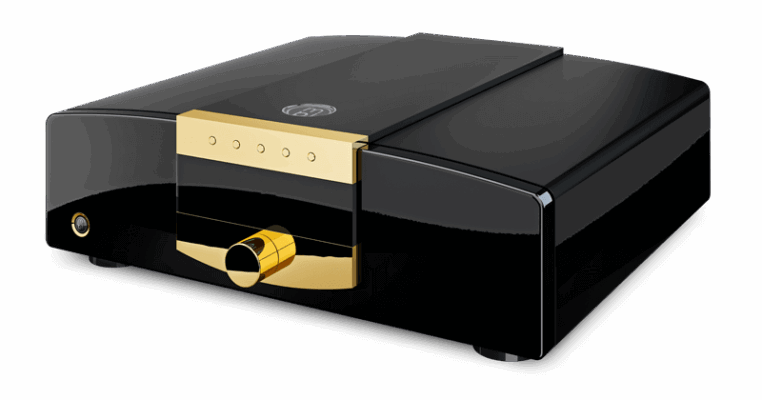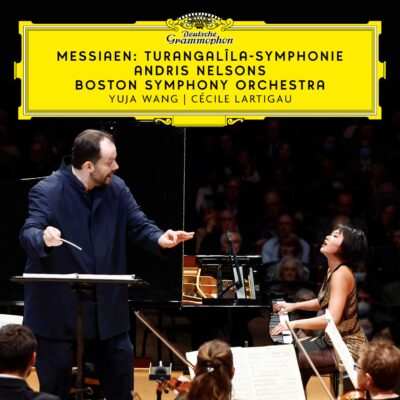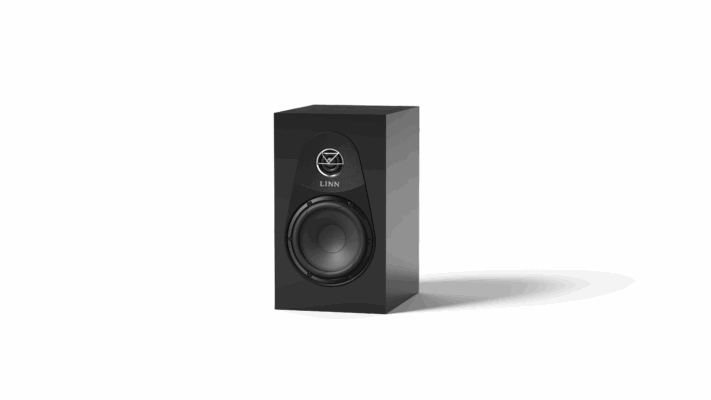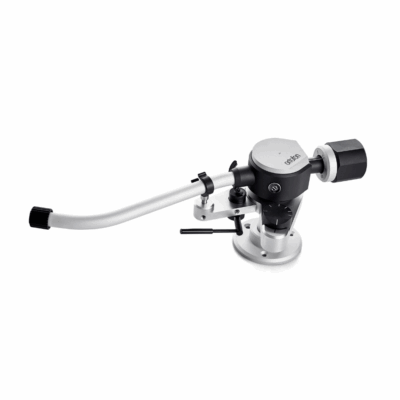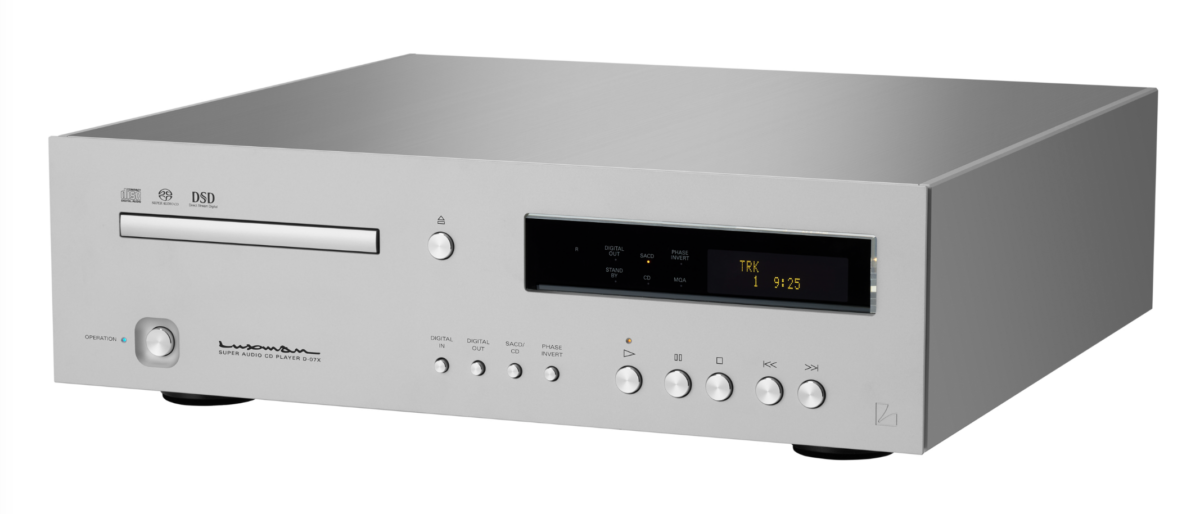This one is different. The Sound Lab G7-7C speaker is just under 7 feet tall, 3 feet wide and 4 inches thick. There are no conventional speaker drivers inside. From the right perspective, it contends for the best speaker in the world. And while $49,500 per pair isn’t inexpensive, in a world where the top speakers are often priced at $400,000 or $800,000 per pair, the Sound Lab might be considered a bargain. Let’s check out the details. Because details matter.
Sound Lab has been building speakers since 1978 under the direction of Dr. Roger West. Unlike most other speaker manufacturers, in a very real sense, the current Sound Lab line, including the G7-7C we’re reviewing today, is an improvement to the original design from over 40 years ago. For those of you steeped in Moore’s Law thinking derived from computational silicon technology, this will seem odd or maybe even wrong. But not all technology is based on transistor densities and wafer sizes – consider French cuisine or violin manufacture or the Porsche 911. All of these technologies proceed incrementally, via experiment and learning, and the rate of learning is different in every field. Electrostatic speakers don’t have the funding of, say, GPUs and the learnings are partially dependent on learnings about the ear and brain and acoustics. Sound Lab feels strongly that electrostatic panel speakers have advantages, and they have spent their decades in the business capturing the advantages and addressing the drawbacks of this concept. Every concept has such advantages and drawbacks.
To invite everyone into the story, we should describe how electrostats operate, because they are different.
For reference, a conventional cone-type speaker has a, you guessed it, circular cone or dome which is the surface that moves air back and forth. This back-and-forth movement of creates sound waves that your ear and brain can hear. The cone diaphragm is moved by a “voice coil” which is…a coiled wire. That wire is placed inside a magnet. The audio signal from your amplifier goes through the coil. When audio electrical current goes through a wire that is in a magnetic field, the wire will move with the music. That movement in turn moves the speaker cone. Woofer cones are typically 8-12” in diameter and tweeter domes are typically 1” in diameter. This information will be relevant in a moment.
An electrostatic speaker also moves air back and forth with a diaphragm. But the diaphragm in an electrostat is a large sheet of mylar which is a thin (about 0.0001 inches). Even though the G7-7C diaphragm is 30- 40 times the size of the cone in a 12” woofer. The Sound Lab diaphragm, despite its size, weighs only as much as 2mm of air occupying the same area as the diaphragm. The “secret” here is that the electrostatic diaphragm is driven over its entire surface, rather than at the central point of the cone. Less diaphragm stiffness and weight are required. The driving force in an electrostat is provided by charging the diaphragm to a very high voltage and then placing the diaphragm between two flat, acoustically open arrays of insulated wires that carry the audio signal stepped up to as much as 30,000 volts. The audio signal and the electrostatic field on the diaphragm create electrical attraction and repulsion and the diaphragm moves to the music signal.
Let’s consider some of the advantages of electrostatic speakers. This is not a complete list but gives you some idea why great speaker designers like Peter Walker of Quad and Arthur Janzen at Janszen and KLH, Arnie Nudell at Infinity, Gayle Sanders at Martin Logan, and Harold Beveridge at Beveridge and others have tried their hands at the idea.
Electrostatic Advantages:
- Low mass diaphragm can be less resonant than cones, though it still has resonances
- Diaphragm resonances are damped by the relatively high air mass
- When executed as a dipole, there is a lack of cabinet resonances
- When large enough, no crossover is needed
- Dipole operation excites fewer modal room resonances
- Dipole operation and wide panels can reduce lateral first reflections in untreated rooms
- Can be configured as a line source so that floor and ceiling reflections are minimized
- Exemplary phase response
- Lack of hysteresis non-linearity because the driver system is non-magnetic
Of course, there is no free lunch, so electrostats face tradeoffs:
- The speakers tend to be physically large when designed to product bass
- There often are practical limits to the efficiency or sensitivity of the speakers; related to this there can be limits to the maximum output capability
- Dipole radiation leads to bass roll-off which must be compensated or accepted
- Electrostats are fundamentally capacitors, and this load is not tolerated by all amplifiers
Okay, enough theory, but I want you to understand that this speaker not only looks different but is acoustically and electrically different from most speakers. It is electrically, mechanically and acoustically different from planar magnetic speakers as well as cones-in-a-box designs.
Sound Quality
We generally don’t pay too much attention to theory because listening often comes with surprises and, anyway, we listen to music not to white papers and spec sheets. So, how does the Sound Lab G7-7C sound, using the absolute sound as our reference? Remember, we’re trying to describe what the G7 does, not tell you whether this particular combination of lower and higher distortions is the one that would yield musical engagement for you.
I’ll start with my view of what makes the Sound Lab exceptional. We’ll then get to tradeoffs, because every audio product has tradeoffs and you need to evaluate those. But if what is exceptional isn’t interesting or motivating, then who cares about tradeoffs?
Imaging
The size of the soundstage presented by the G7s is quite large compared to standard box speakers. To be clear about this, by soundstage we mean the width, depth and height of the virtual stage where you can imagine the performers are playing. Roughly, I would say the G7s present a soundstage that can be twice the width of what you hear with most box speakers. In addition, the G7s don’t have the strict height limitation that many box speakers do, where image height sometimes seems restricted to a rectangle that stops roughly at the tops of the speakers. Depth is excellent too, though this seems to me to be matched by the best box speakers in that it extends to or beyond the wall of the room behind the speakers. So, overall, the soundstage seems substantially larger than with conventional speakers.
But, so what? Well, I have commented before that many box speakers present interesting and detailed images, but that these seem miniaturized compared with live music. With the Sound Labs, this miniaturization is pretty much gone. It sounds quite a bit like you are in, say, the 5th row at a club or row F or G in a concert hall. The scale is rather like it would be if the performers were…in your room or in a room somewhat larger than your room.
This “you are there” feature extends to the size of the performers. They aren’t unnaturally large. They aren’t unnaturally small either. They seem about right, though they may be somewhat bigger than the “miniature performers and a miniature stage” that we often are accustomed to. With the Sound Labs, performers are arranged on a bigger stage than most of us are used to from stereo reproduction and the performers are appropriately sized.
I will note that some instruments are incorrectly sized. This is something I have commented on with piano on other speakers as well. It appears that engineers sometimes prefer to mike the left and right side of pianos with different mics and then piano is presented as spreading across the stage. The Sound Labs can’t erase this error and neither can other speakers.
The soundspace, which is the sense of the size of the hall or venue where the performers are playing, is also well presented with the G7. This seems like a coherent extension of the larger soundstage (remember, it is not the same thing), and it lacks the occasional tendency of some box speakers to stop the sense of soundspace around the left and right edges of the stage. We’ll get to this in more detail later, but the excellent deep bass of the G7 also helps with soundspace portrayal.
Transparency
Another standout quality of the G7s is what we normally call transparency. This is simply the sense that the musical signal is presented without any fog or screen or haze on the “metaphorical window” through which we are listening. This is the kind of thing you sometimes don’t notice until it is gone. But when the veil is lifted, the sense that the performers are in the room, initially set up by the imaging, is significantly enhanced.
The ability to follow specific performers on live recordings is an unexpected but welcome benefit of transparency. Listening to Southern Man on the 4 Way Street album from Crosby, Stills, Nash and Young was a lesson in how well Neil Young and Steven Stills could do improv electric guitar work. Similarly, on Little Feat’s live album Waiting for Columbus, the supporting bass work of Kenny Gradney along with Bill Payne’s keyboards were as easy to follow as if they had their own dedicated channels.
The audible effects of transparency more generally are a believable level of rich detail for each instrument, so that you hear the sound of the body or the strings or the bow or the drumhead or the vocalist’s throat and chest. Harmonics aren’t diminished unnaturally. There is a sense of air around the instrument as if it is being played in space, which of course it usually is. This helps you relax into the music.
Transient Quickness
Now related to transparency is the idea of transient quickness, which you hear clearly on the G7s. Plucked guitar or drum strikes or piano hammers have a speed and sharpness that is impactful and also natural. Again, you might not miss this if you don’t listen to much live music, but when you hear it, you sense that it is right. It brings a level of excitement and dynamic transition to the music that is very engaging, like the real thing.
On the neo-classical album La Folia de la Spagna, there is a main thread of somewhat noodly renaissance recorder and harpsichord. On the G7s, this is clear and detailed. But then, filling in some of the missing music due to the toll taken on the sheet music paper over five centuries, the Atrium Musicae de Madrid substitutes some claps of wooden blocks. I seriously just about jumped off my listening sofa the first time I heard this on the G7s.
Bandwidth
The G7s are broadband devices. You might expect excellent high frequency response, though I think most of what you’d respond to is the transparency I mentioned before, not the high frequency cutoff. But, subject to my next topic of adjustability, the G7 extends easily to 20 kHz. Dome tweeters can do that too, however, so that isn’t what is exceptional. Treble distortion is, since it seems exceptionally low on the G7. To go with this, at the low end of the frequency spectrum, the G7 is pretty much flat to below 30 Hz. There are cone speakers that go there, too, but such capability is rare for a dipole. Sound Lab apparently has patents on their methods for achieving this.
Adjustability
You might consider this a feature or a bug, but the G7 is a very adjustable speaker. This gives you a somewhat better chance at getting the speaker to work well in your room if you are willing to put in some work. The adjustments start with a brilliance control that sets the upper midrange and treble output level. I set the level for about a 2 db/octave slope above the midrange, though I must say a line source with that slope sounds closer to the normal treble slope than the numbers might indicate. On the energizer there is also a bass level control, which affects output below the Schroeder frequency of about 200 Hz. I set this to +3db for my room. It makes a substantial change and allowed the bass range to measure flat rather than rolling off.
Beyond the control knobs, the positioning of the speakers is a major factor. With such a wide speaker, toe-in or lack thereof has a significant effect on midrange and treble output. In addition, the separation of the speakers has a meaningful effect on imaging. I thought the G7s were able to support wider spacing than normal while imaging well; in fact, the best imaging was with the speaker centers about 4’ farther apart than I use for most box speakers.
Bass is an area where positioning the G7 may give less control of output in the ‘extra oomph’ direction than with box speakers. Since box speakers are omnidirectional in the bass, they excite all room modes, and with positioning you can get bigger, boomier sound. I don’t recommend that generally, but it is a tuning option that dipoles don’t have to the same degree because they are not as able to excite lateral and vertical modes.
Other Factors To Consider
Now we come to a group of factors that aren’t what make the Sound Labs exceptional. These aren’t even necessarily tradeoffs, but they are qualities you should be aware of if you are serious about these speakers.
Voicing
The G7s have a slightly midrange-forward sound. This is consonant with the transparency and dynamics I mentioned before as exceptional qualities. The voicing slightly emphasizes the character of clarity, and here I think the voicing is artfully judged for some listeners. At the same time upper bass and lower midrange get relatively less emphasis and so the weight in those frequency bands is slightly diminished. This avoids muddying things up, but on some recordings it can sound slightly thin. Perhaps the recordings are mastered that way.
The frequency response measurements show how small the effect is, so it truly fits with the idea of voicing. You can see an elevation of about 2 db broadly executed between 400 Hz and 2500 Hz. And, as mentioned before, you can see flat output to below 30 Hz (the limit of this room given the lateral null).
However, some will want to note that the bass to midrange area does not follow the perceptually derived Harman curve which would have low bass up about 5 db relative to the midrange. Note that the Harman research shows about 25% of people prefer the Sound Lab type of voicing to the standard Harman slope.
In the treble, the curve is more Harman-like, falling about 2 db per octave with my settings. I should note that it doesn’t sound quite like that, but more like perhaps -1 db per octave. In any event, the brilliance control can tweak this and you can get flat response in the treble if for some reason you want it (the Harman curve tends to reflect the natural fall off in high frequency energy as you move from recording mic distance to distances where the audience actually experiences music, so “flat” isn’t really flat but rather elevated from that perspective).
I should note that the G7 voicing seems to reduce bass punch a bit compared to box speakers you may be accustomed to. The G7s might be ideal candidates for use with a very carefully set up multi-woofer system. It is pure speculation, but the shape and adjustability of the response curve might make smoothing out room effects relatively easy (some all speakers in real rooms need) while not going overboard on bass level. While I know many of you will view the basic G7 price point as “excessive”, for those shopping speakers in the price range from $50k to $100k, using the G7 as a platform to address imaging, transparency and room acoustics might be a shorter path to the state of the art than a more expensive box speaker. If you are willing to do the work.
Amplifier Requirements
As mentioned before, the SoundLabs have different impedance characteristics than conventional speakers. They are nominally 9-ohm speakers, but they rise to 32 ohms in the low bass.
I primarily used an Audio Research 160S for my testing. This has 8 and 16 ohm taps, both of which sounded natural, though I ended up using the 8 ohms taps most of the time. The 160S delivers 140 watts per channel into either 8 or 16 ohms, and I thought this was around the minimum you would want in a room of my size (4200 cubic feet). While the 160S meters were dancing around, the sound never seemed strained, and the dynamics were impressive even when I had the volume relatively high for my tastes (85 db max, and I end up in the upper 70s when playing things “loud”).
Basically, the G7s are somewhat less efficient than typical box speakers. Do note that sound levels fall off more gradually with a line source than with box speakers, so in larger rooms the G7 may not need as much added power as you might think. Still, I would view about 150 watts into 8 ohms as the minimum, as I got the feeling most of the 140 watts I had available were needed at times. Which means you might want 600 watts to get higher levels or greater dynamics if you listen to appropriately dynamic music (that would give +6 db headroom compared to what I had). The conundrum of course is that the SoundLabs are so transparent, that you will want a really clean amp as well, because the quality of the 160S I used was very much on display and valued.
Note also that the SoundLab design is essentially impossible to blow up. If you exceed the excursion capabilities it may sound bad, but it won’t be damaged. I never got there.
Size and Style
Of course, these are big speakers. Sound Lab uses the same technology in speakers of various sizes and prices, from just under 5 feet high to just under 9 feet high and from 1.5 feet wide to 3 feet wide. The idea is to choose the height to come as close as possible to your ceiling height, which simulates the desired “infinite line source”. Width is a function of budget, with the smallest (not small) model priced at $27,000. Width also should be tailored to your interest in deep bass (there is a higher bass rolloff frequency with narrower panels – we measured a 2-foot-wide Sound Lab starting to roll off in mid-40 Hz range but with strong response above that point).
Note also that the frames and grille cloth allow many choices. The green grille cloth of my review samples may send some of you into fits of apoplexy, but here are some alternative colors to give you an idea (there are 72 choices).
Beyond The Sweet Spot
The G7-7C works as described in the sweet spot. I set it up to work best in the sweet spot. In that setup, the image tends to collapse if you move, say, 3 feet to the left or right of the central position. Now, as I mentioned in the section on adjustability, you can toe the speakers in more, and the imaging in the sweet spot will be very good, but not at the excellent level I discussed above. However, with extra toe in you will gain some benefits as you get away from the sweet spot. I don’t feel that most stereo rigs work very well outside the sweet spot, but those with broader dispersion seem to work somewhat better than the Sound Labs. Remember that distance from the speakers, not just radiation patterns, are at work outside the sweet spot.
A related issue occurs with some conventional speakers when you stand up from the sweet spot. With cone drivers, there will be interference effects and many speakers are not optimized in the vertical plane. The Sound Labs of the height of the G7 (or taller) effectively are optimized for either sitting or standing. A line source like these produces a wavefront that is effectively cylindrical, so sitting or standing you hear pretty much the same thing.
Energizing
As I mentioned at the outset, electrostatic speakers require a means of charging the diaphragm to high voltages. The classic method is to plug the energizer box into an AC outlet. That’s great if you have AC outlets in appropriate places. Sound Lab uses a different approach which they call Full-Range Auto-Bias. They derive the static energizing signal from the audio signal. No AC cords, just hook up the speaker wire and you’re ready to go. This is simpler and mirrors the way conventional speakers are wired. The only drawback I noticed is that when you first play music on a given day, you must wait a few seconds for the music to charge the diaphragm.
Summary
As I said, this one is different. The performance of the Sound Lab G7-7C in imaging and transparency is unsurpassed in my experience. It has, of course, other characteristics that need to fit your experience and environment and economics. If those factors align, the Sound Labs might be your long-term answer.
Tags: LOUDSPEAKERS VIDEO SOUND LAB











